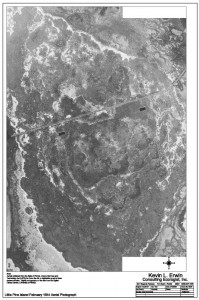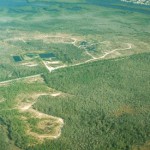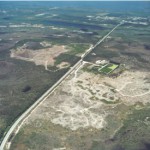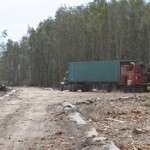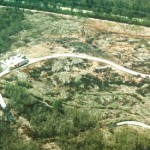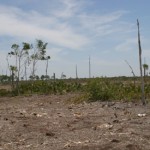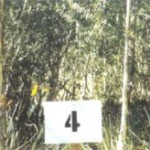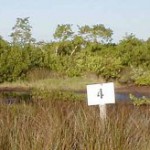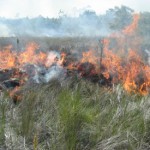Lee County, Florida
Kevin L. Erwin Consulting Ecologist, Inc. (KECE) was instrumental in the design and permitting of the Little Pine Island Mitigation Bank, one of the first mitigation banks in the State of Florida permitted and endorsed by state and local agencies (1996). The purpose of the project is to restore the island’s wetland ecosystems through removal of exotic species, re-establishment of native vegetation, and hydrologic restoration. The project includes the entire 4,700 acre state owned Little Pine Island located along the Gulf Coast of Lee County within the Charlotte Harbor Aquatic Preserve.The island historically supported a diversity of native habitats ranging from tidally influenced mangrove swamps and salt marshes to freshwater marshes and hydric pine flatwoods. KECE conducted detailed ecological assessments of these habitats to prepare an appropriate plan for restoration and management. The baseline efforts included trapping and observing wildlife, water quality monitoring, installation of a sophisticated ground and surface water monitoring network, detailed vegetation mapping, macro-invertebrate monitoring, and soils analysis. At the request of the Department of Environmental Protection, KECE ecologists prepared the first functional assessment methodology for wetland mitigation projects and banks. This procedure, which uses a landscape ecology based approach was the basis for UMAM and still frequently used.
KECE and the project team designed an innovative restoration methodology which allows for removal of the exotic trees without impacts to the seed bank and remaining native vegetation. As part of the development of the exotic removal methodology, KECE conducted herbicide and biomass test studies on the island in each habitat type to examine the effects of various herbicides and application rates to exotic trees and the effects on surrounding non-target native vegetation and the native seed bank. This successful experimentation saved considerable time and expense by precluding the need for plantings as a result of successful protection and management of a native seed bank which had been buried in a drained coastal Melaleuca swamp for more than forty years. Prescribed burning is used as part of the restoration process to enhance and maintain the native fire dependent ecosystems. All primary phases of restoration are now complete and successful. Three years of comprehensive baseline monitoring and 11 years of post-restoration monitoring have been conducted by KECE. Monitoring has shown that all twenty-four criteria (of 24 total required to meet full success) have been met or are clearly trending towards success in each wetland type on the island.
The ecological model KECE produced for the restoration of Little Pine Island was developed as a result of the research, monitoring and analysis of: topography; hydrology; plant species percent cover, reproduction, richness and diversity; seed bank viability; invertebrate species richness, diversity and feeding guilds; utilization by mammals, reptiles, amphibians, fish, migratory and resident birds; species richness and feeding guilds; soils redox/pH and interstitial salinities.
The historic freshwater lens in the center of the island which was drained by mosquito canals and subject to saltwater intrusion has now been restored to more than 700 acres. Monitoring also confirms the establishment of natural tidal patterns on the island.
Wildlife monitoring has demonstrated a dramatic increase in wildlife utilization since restoration. Species richness, as well as numbers of individuals using the restored areas, has shown rapid and steady increases following restoration. To date, wildlife monitoring has documented utilization by at least 11 species of mammals, 108 bird species, including 51 wetland-dependent bird species, 17 species of native reptiles, 7 species of native amphibians, 13 species of native fish, and approximately 95 aquatic macroinvertebrate species. [It should be noted that during the pre-restoration Little Pine Island assessment in 1995 wildlife utilization included only 4 mammal species, 43 bird species, including 20 wetland-dependent bird species, and 5 species of native reptiles.]
Photographic History:
- Aerial photo before extensive removal of melaleuca trees (invasive exotic).
- Aerial of Little Pine Island after removal of melaleuca trees from large areas
- Specially constructed temporary roads were used for the removal of melaleuca trees (2004)
- Melaleuca removal and temporary road.
- Remnant native habitat remained after removal of invasive exotic vegetation (2004)
- Pre-restoration: Salt marsh with dense invasive exotic vegetation.
- Salt marsh restoration progress.
- Prescribed burn used for habitat management (2007).
For more photos and information, including the best way to visit Little Pine Island, follow this link to Mariner Properties Little Pine Island Website.
Read The Nature Conservancy’s article on Little Pine Island.
